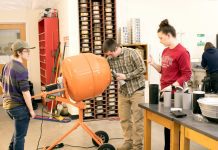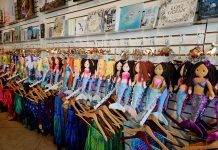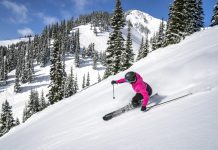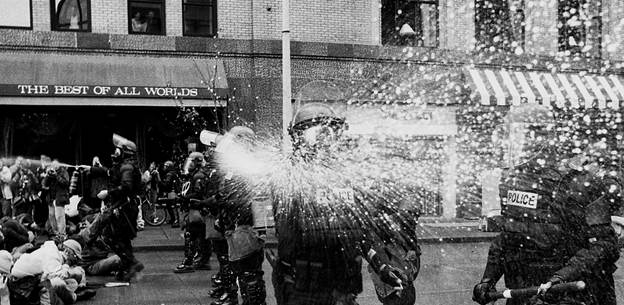Submitted by The Washington State History Museum
The Northwest has long been familiar with protest as a form of free speech, and nationally, recent protests have been vividly recounted in the news. It is the photography that tells much of the story. On Saturday, September 30, 2017, the Washington State History Museum will open Loyal Opposition: The Protest Photos of George P. Hickey, with approximately 80 prints on view through Sunday, December 3, 2017. On Thursday, November 16 at 5:30 PM, Hickey will present a free gallery talk; hear about his experience as a freelance photographer and the journalistic thrill when that “decisive moment” presents itself.
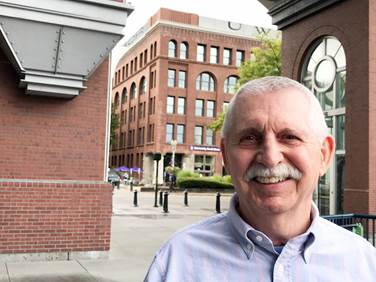
In 1997 at the age of 49, Hickey bought his first camera?a Pentax SLR?and as a self-taught photographer, embarked on a career in photojournalism. In the late 1990s and early 2000s, he placed himself and his cameras on the front lines of protests in and around Seattle, capturing critical moments with dramatic results. He developed the film and produced prints from the negatives in the darkroom of his West Seattle apartment. His work appeared in The Stranger, Seattle Times, Seattle Weekly, Real Change, and other notable Northwest publications.
“Citizens often feel unheard by those elected to represent their interests, so they take to the streets in an effort to gain attention. They organize; they march; they chant; they wave signs; all in the hope of attracting attention to an issue they care about,” said Hickey. “I felt their commitment and efforts to improve the lives of those in their community should not go unnoticed and unrecorded. I attended and photographed well over one hundred street protests, documenting the efforts of protesters to communicate their demands.”
The exhibition was drawn from Hickey’s recent donation of a substantial body of prints and negatives to theWashington State Historical Society. Museum visitors will experience the collective impact of protest photos documenting the World Trade Organization protests in Seattle, as well as protests for LGBTQ equality, animal rights, and anti-war rallies. The photos will be accompanied by a display of protest-related objects from the Historical Society’s collections.
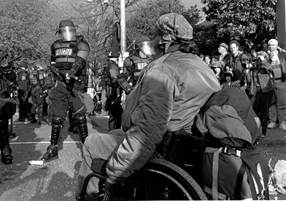
“I put a lot of work into photographing protests, developing the film and making prints; the archive resulting from that work was sitting in my closet, stored in boxes, with no guarantee of preservation after my death,” Hickey shared regarding his decision to donate his work. “Donating my photography archive to the Washington State Historical Society is a way to make my work useful by being readily available to the public and researchers, and also ensures that it will be cared for by museum professionals. The archive will be useful for many years into the future.”
George P. Hickey has lived in Washington for 28 years. He purchased his first camera with the intent of photographing landscapes. Intimidated by the camera manual, he signed up for a local “how to use your camera” workshop, followed by a workshop on how to set up and use a darkroom. Quickly growing bored with landscapes, he searched the photography section at the Seattle public library for ideas, sparking an interest in street photography. He began volunteering as a photographer for Real Change, a Seattle newspaper focused on social issues. Building on that experience and an interest in social justice, Hickey began photographing street protests, documenting how protesters visually express and communicate their demands. He continued to hone his camera, darkroom, and printmaking skills through classes at Photography Center Northwest. Hickey’s work has been on view in three previous shows; this will be the first museum exhibition of his photographs.







